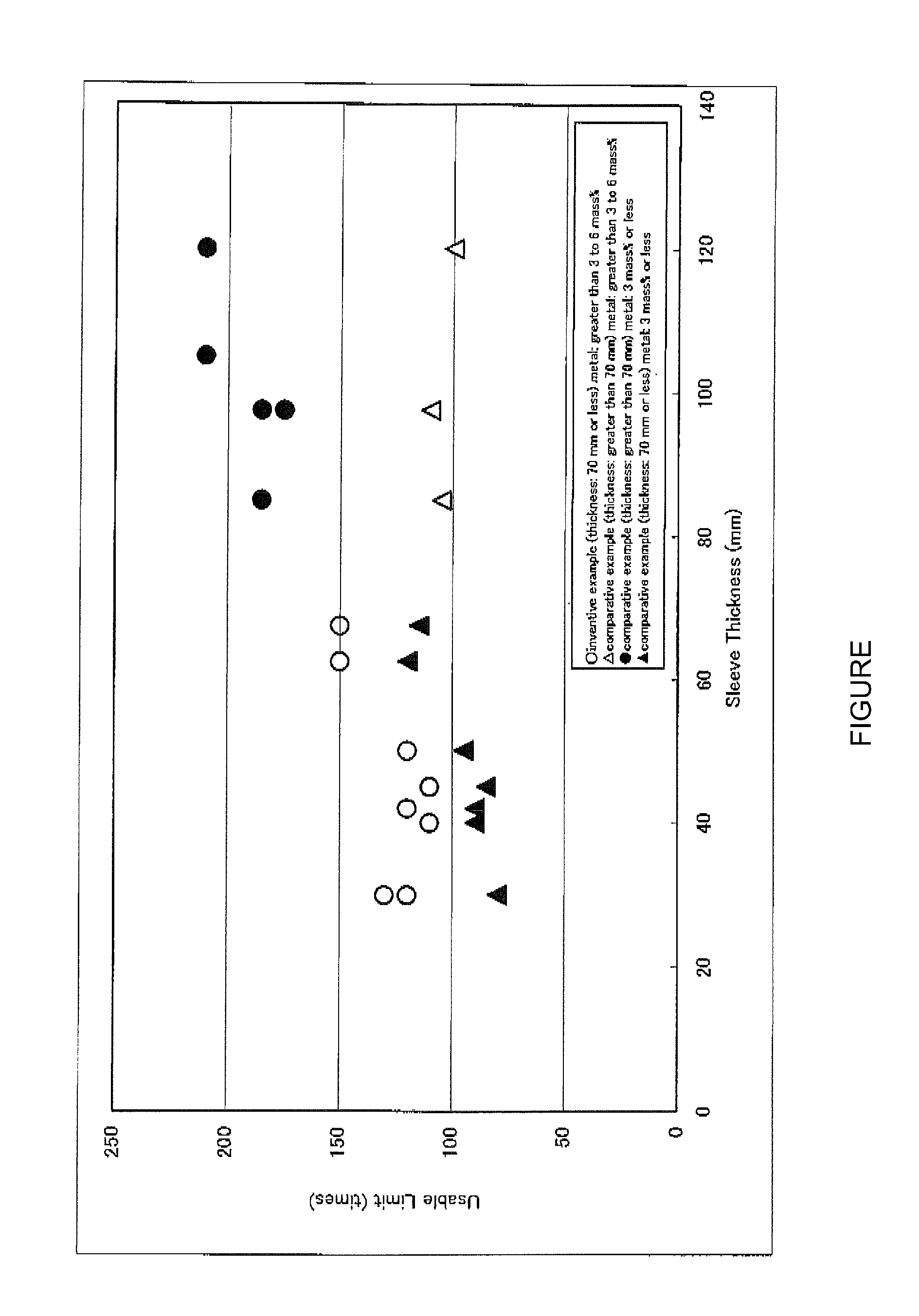High-durability sleeve bricks
a sleeve brick, high-durability technology, applied in the field of sleeve bricks, can solve the problems of significant deterioration of thermal shock resistance, and achieve the effects of reducing the frequency of sudden sleeve-brick replacement operations coping with fracture or the like, and ensuring the durability of the sleeve brick
- Summary
- Abstract
- Description
- Claims
- Application Information
AI Technical Summary
Benefits of technology
Problems solved by technology
Method used
Image
Examples
examples
[0043]Inventive examples are shown in Table 1, and comparative examples are shown in Table 2. Dimensions of each of a plurality of cylindrical-shaped sleeve bricks produced according to Tables 1 and 2 are shown in Table 3. A plurality of sleeve bricks having different shapes were produced in respective compositions thereof. Tables 1 and 2 show a measurement result on physical properties of each of the sleeve bricks, and a test result on a usable limit of each of the sleeve bricks in a converter. Any sleeve bricks produced in each of the inventive and comparative examples which is assigned with a specific number, have the same shape. For example, in the inventive or comparative example 1, sleeve bricks having the same shape (sleeve code A) were used. Further, in the inventive or comparative example 2, sleeve bricks having the same shape (sleeve code B) were produced.
[0044]In the inventive and comparative examples listed in Tables 1 and 2, fused magnesia having a purity of 99 mass % a...
PUM
| Property | Measurement | Unit |
|---|---|---|
| thickness | aaaaa | aaaaa |
| particle diameter | aaaaa | aaaaa |
| particle diameter | aaaaa | aaaaa |
Abstract
Description
Claims
Application Information
 Login to View More
Login to View More - R&D
- Intellectual Property
- Life Sciences
- Materials
- Tech Scout
- Unparalleled Data Quality
- Higher Quality Content
- 60% Fewer Hallucinations
Browse by: Latest US Patents, China's latest patents, Technical Efficacy Thesaurus, Application Domain, Technology Topic, Popular Technical Reports.
© 2025 PatSnap. All rights reserved.Legal|Privacy policy|Modern Slavery Act Transparency Statement|Sitemap|About US| Contact US: help@patsnap.com

